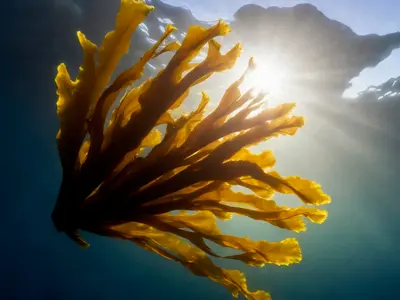

Nos recherches
Nos recherches portent sur l’écologie descriptive, fonctionnelle et évolutive. Nous explorons les écosystèmes marins à travers leurs dynamiques à différentes échelles géographiques et temporelles, depuis les processus moléculaires jusqu’aux communautés complexes. Les différentes équipes d’AD2M orientent leurs questionnements vers des organismes répartis sur l’ensemble de l’arbre du vivant : des procaryotes photosynthétiques à tous les eucaryotes unicellulaires (protistes) du plancton, et des macroalgues à divers invertébrés marins, principalement benthiques.
Nous avons une expertise collective en écologie, évolution, physiologie, biogéochimie et océanographie.
Nos travaux couvrent l’ensemble du domaine océanique et s'appuient sur des campagnes océanographiques pour explorer des zones éloignées, du milieu pélagique jusqu’aux grands fonds.
Contact(s)
- Laure GuillouDirectrice de l'Unité
News
4 research teams
Team ECOMAP - Ecology of Marine Plankton
Team DiSEEM - Dispersal, Speciation and Evolution of Marine Species
Team EDYMAR - Ecogeochemistry and DYnamics of MARine systems
Team ECOPHY - Ecophysiology of Marine Invertebrates
Publications
Prokaryotic microbiota outperform eukaryotic microbiota in differentiating between infection states of iconic diseases of two commercial oyster species
K. Mathias Wegner, Benjamin Morga, Laure Guillou, Martina Strittmatter, Cyrielle Lecadet, et al.. Prokaryotic microbiota outperform eukaryotic microbiota in differentiating between infection states of iconic diseases of two commercial oyster species. Aquaculture, 2025, 594, pp.741363. ⟨10.1016/j.aquaculture.2024.741363⟩. ⟨hal-04665295⟩
Fouling community shows high resistance and metabolic resilience towards experimental high intensity heatwave
Robin P.M. Gauff, Stephane Greff, Olivier Bohner, Stéphane Loisel, Christophe Lejeusne, et al.. Fouling community shows high resistance and metabolic resilience towards experimental high intensity heatwave. Marine Environmental Research, 2025, 203, pp.106813. ⟨10.1016/j.marenvres.2024.106813⟩. ⟨hal-04775806⟩
Sex chromosomes and chromosomal rearrangements are key to behavioural sexual isolation in Jaera albifrons marine isopods
Ambre Ribardiere, Claire Daguin-Thiebaut, Jerome Coudret, Gildas Le Corguille, Komlan Avia, et al.. Sex chromosomes and chromosomal rearrangements are key to behavioural sexual isolation in Jaera albifrons marine isopods. 2025. ⟨hal-04923366⟩
Chromatic acclimation shapes phytoplankton biogeography
Francesco Mattei, Anna Hickman, Julia Uitz, Louison Dufour, Vincenzo Vellucci, et al.. Chromatic acclimation shapes phytoplankton biogeography. Science Advances , 2025, 11 (8), ⟨10.1126/sciadv.adr9609⟩. ⟨hal-04962714⟩
A single theory for the evolution of sex chromosomes and the two rules of speciation
Thomas Lenormand, Denis Roze. A single theory for the evolution of sex chromosomes and the two rules of speciation. Science, 2025, 389, pp.eado9032. ⟨10.1126/science.ado9032⟩. ⟨hal-04736667⟩
Symbionts of predatory protists are widespread in the oceans and related to animal pathogens
Fabian Wittmers, Camille Poirier, Charles Bachy, Charlotte Eckmann, Olga Matantseva, et al.. Symbionts of predatory protists are widespread in the oceans and related to animal pathogens. Cell Host & Microbe, 2025, 33 (2), pp.182-199.e7. ⟨10.1016/j.chom.2025.01.009⟩. ⟨hal-04968405⟩

